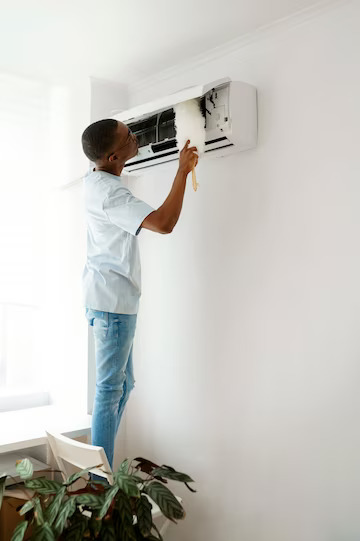
The floor installation is a significant undertaking that entails thorough attention to detail, as its failure can lead to permanent structural problems and expensive renovation. You can either do it yourself or hire an expert, but whichever the case, being aware of the most common mistakes in flooring installation (say 10) would be time and cost-saving in a way.
In this article, we will present and classify all these common errors and provide ways to prevent making them.
This mistake is known as the floor laying failure where people fail to clear the surface ready for the subflooring. In general, any subfloor that is unlevel, wet, dirty, or humid is asking for trouble e.g. movement or breakage in the floor covering, unpleasant noises from the floor, and even increased deterioration of the flooring. A level and dry subfloor prepare a surface for the other floor coverings and their function as expected.
Subfloor preparation involves observing the floor for lumps, swells, and the like, removing any waste, and making sure that the floor is dry. All the steps in this preparation stage must be followed because if they are not followed, the whole flooring system will not endure.
Measurement mistakes are to be blamed as one of the installation situations that have had numerous occurrences. When it comes to mistakes in floor measurements, homeowners tend to think about the area but do not consider the doorways, nooks, and other projections the room has. In the same way, such inaccuracies can lead to the planks not being appropriately fitted and affect the desirability of the surface.
To fix this, some people measure the same area multiple times and acquire up to 10-15% more flooring than the measured area. This is because sometimes problems like having a wall that is not straight and trying to fit the planks closely together result in large gaps between the flooring planks.
It is important to allow flooring materials, especially wooden or laminated flooring materials, to adjust to the room environment's climatic conditions, such as heat and moisture levels. If such instructions are ignored, the planks will likely swell or shrink when fixed, resulting in twisting or unattractive spaces between the boards.
To alleviate them, disregard temperatures and other conditions that may make the intended area unsuitable for the Caldwell flooring materials for a period of 48 to 72 hours. This reduces the likelihood of issues arising due to quick temperature and moisture changes.
Engineered wood and laminate flooring materials tend to incline and increase when there are temperature or humidity variations. When the necessary expansion gaps from the walls are lacking, users end up with buckled and wrinkled lazy wood. When this is the case, leaving up to 1 cm of gap is recommended, which will permit some lateral movement of the expansible materials.
Most of the time, baseboards or molding will hide this gap; therefore, it will not be seen, but it is vital if you want your floor to last. Skipping this procedure can be quite annoying and resource-consuming. This is because when the period of expansion ends, the floors tend to push A against its neighboring planks, causing it to peel up over the subfloor.
Every single Floor type is applied with different Adhesives and Underlayment blankets. When incorrect materials are applied, the flooring may either poorly adhere, have gaps, or completely fail. For instance, if the contractor doesn’t use the right materials for supporting structures, over time, hardwood or vinyl planks may come up, or too much noise may come from unstable surfaces, like using thin underlays or poor transition pieces.
Adhesives and underlayments have to be strictly adhered to as per their respective brands. The right combinations and the right way on the flooring maximize how well the floor covers the subfloors. The subfloors make insulating and damping out noise from the bowling alleys possible.
Another frequent error is not drawing the appropriate layout for the flooring. Missing this step will most likely lead to awkward cuts, uneven seams, or misaligned planks. This becomes particularly critical for tile and patterned floors as any poor layout stands out far more than in normal floors.
Do not skip the dry fit and proceed to install the flooring. If the layout is done prior, especially for long, narrow rooms with obstructions, it is easy to make it even and professional looking.
An uneven subfloor is one of the most effective ways of ruining your flooring material. In most cases, these uneven surfaces lead to instability, shifts, cracks, and premature wear. Whether you are putting down hardwood, tile, laminate, or any other type of floor covering, the underfloor must always be smooth and well-prepared first.
At times, you may have to deal with those bumps by using sandpaper before doing the necessary installation or, indeed, applying a self-leveling compound in the case of low places. It may be viewed as one extra task, but ensuring the world is free from temptations like cracking or squeaking after a while is very important.
In places such as basements, kitchens, or bathrooms, completely ignoring moisture control measures can lead to great damage over time. Excess moisture can also emanate from the flooring, rot the subfloor, or even develop molds and mildew.
A moisture barrier should be installed in every hazardous room to avoid damage to your floors. This is especially true for wood laminate flooring, which will most often become warped and swollen in moisture conditions.
There is a floor transition in any room or a transition between two different flooring materials, like tile and carpet. Not paying the required attention to the installation of proper transition strips can lead to uneven floors and increased chances of tripping.
Appropriate transitions do not only enhance the appearance of the floors but also, over time, such transitions protect the floors wears out of the edges of the flooring. Transition strips help solve the problem of edges lifting or cracking from the floors, which arises due to normal movements on floors.
Due to the increased popularity of home improvement services, it is common for homeowners to undertake quick repairs to their flooring without professional assistance. Sadly, most DIY installations are infested with mistakes, such as poor sealing, wrong cuts, and even nails.
The process of installing flooring requires proper tools and certain skills regarding the materials used. If you choose to install yourself and make mistakes, expect expensive damage and poor quality of the outcome. By ensuring that the right measures are taken, from guidelines that come with the available materials to their application, you will come out satisfied.
Remaining clear of these ten flooring installation mistakes will spare you time, resources, and headaches. Whether you have done your flooring or prefer to utilize a professional in the area, knowing these mistakes will help ensure that your flooring looks nice and stays stable for many years.
If you want flooring service in Singapore, make sure you get in touch with Magic Build. We will provide you with expert floor installation services with high levels of accuracy. When it comes to installation, Magic Build ensures that there are no mistakes by offering the best quality products and materials.
Feel free to contact us for more information about what we do and how we will help with your flooring project.
Read to Know: Exploring Smart Plumbing Technology for Modern Homes in Singapore
684bd67668749.jpg)


Subscribe to our newsletter to get inbox notifications